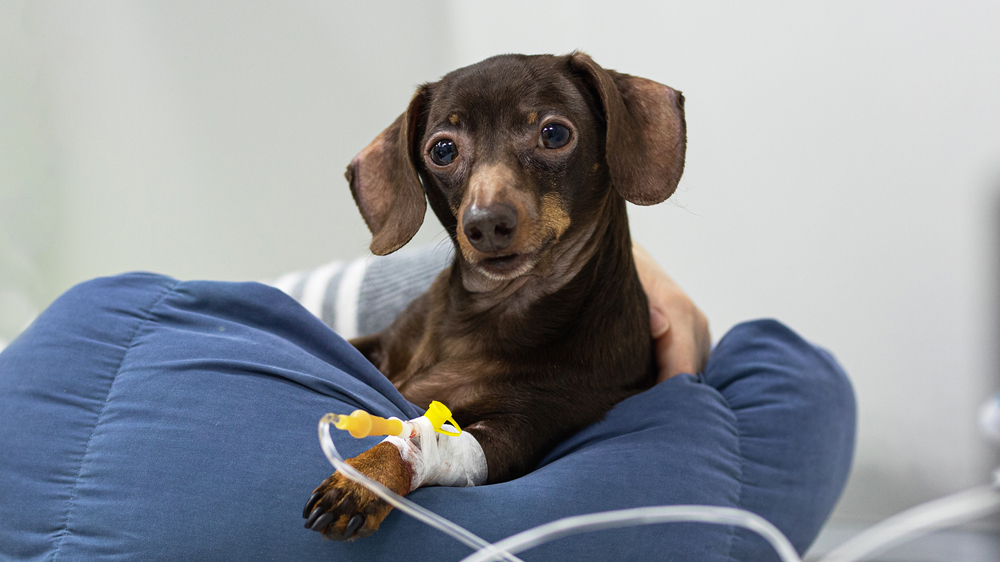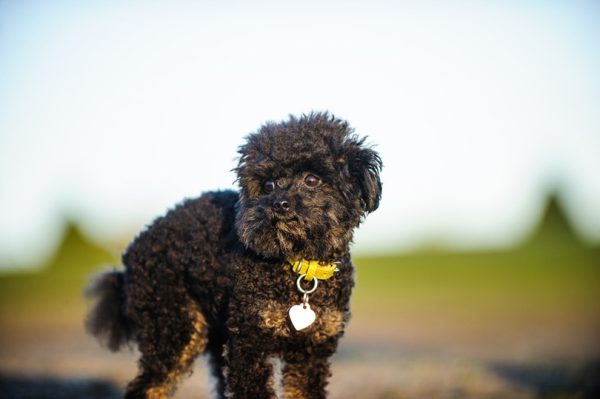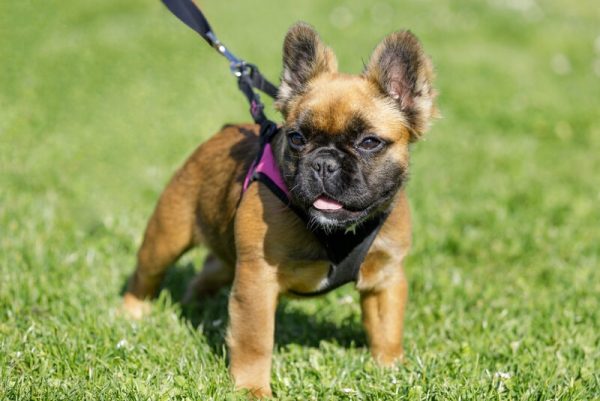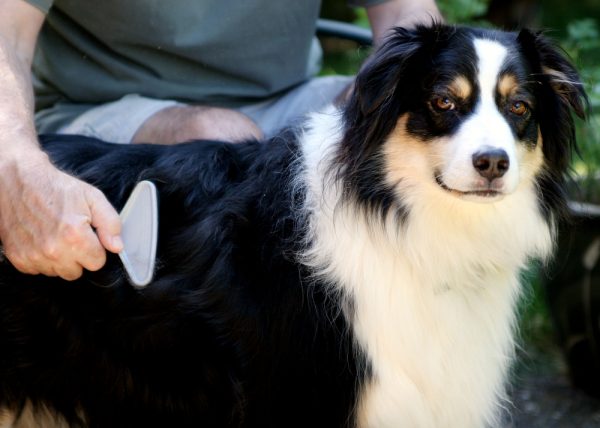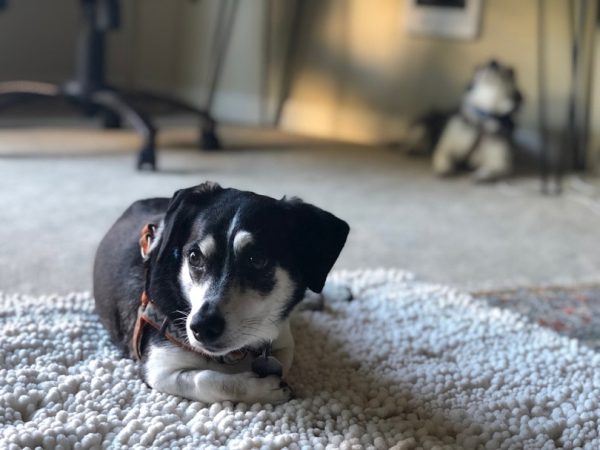In this article
Our dogs are important members of our families, and it’s perfectly normal to be worried if your veterinarian suggests anesthesia for your furry family member. Maybe they need dental cleaning, or you’ve noticed a small lump that needs to be removed. Should you worry about the anesthesia? What are the side effects of anesthesia in dogs? As a general answer, yes, anesthesia has potential side effects. Let’s read the details related to this answer.

What Is Anesthesia?
Anesthesia comes in different forms. There are nerve blocks, injectable medications, and inhalant anesthesia. The type of anesthesia your veterinarian uses will depend on the procedure needed and your dog’s underlying health status.
Typically, for general anesthesia, veterinarians will give a pre-anesthetic sedation injection before inducing anesthesia with an injectable medicine like Propofol. Dogs are often maintained under anesthesia with inhalant medications administered through an endotracheal tube. These medications are usually Isoflurane or Sevoflurane.
If your dog is getting small lump biopsies, your veterinarian might choose to use a local block and give a mild sedative. Conversely, your dog may need an epidural and general anesthesia for a cruciate injury repair.

Side Effects of Anesthesia in Dogs
There are potential side effects of anesthesia, with the most common being dysphoria and gastrointestinal signs. There is also a small risk of anesthetic complications like cardiac arrest and death, but far and away, these are incredibly uncommon.
Studies in dogs and cats have found that anesthesia has a lower chance of risk in dogs than in cats. The death rate with anesthesia for healthier animals was 0.12%, while for animals in poor health, it was 4.77% 1. Anesthesia can cause various side effects, both during and after anesthesia.
- Nausea
- Injection site pain
- Lameness after injection
- Diarrhea
- Bradycardia (low heart rate)
- Hypothermia (low body temperature)
- Grogginess
- Dysphoria
- Inappetence

Are Some Dogs at a Greater Risk of Anesthetic Complications?
- Sighthounds, such as Greyhounds, have reduced amounts of an enzyme in the liver, cytochrome P450. With lower levels of this enzyme, they process anesthesia slower.
- Like many Collies, certain breeds can have a genetic mutation in a gene, MDR1, or multidrug resistance. Certain medications cross the blood-brain barrier and can have a more intense effect.
- Greyhounds also have a higher risk of developing malignant hyperthermia 2. In this uncommon condition, the body temperature increases significantly in response to anesthesia.
Some dogs also have physical changes that can increase their risk of complications with anesthesia. Brachycephalic breeds, such as French Bulldogs, English Bulldogs, and Pugs (your short-snouted breeds), often have several differences that make it harder for them to breathe, typically dubbed brachycephalic airway syndrome.
- Narrower trachea
- Stenotic nostrils
- Elongated soft palate
It’s also important to recognize that these dogs are often overweight, increasing the risk of anesthetic complications.
ASA Status
You might hear your veterinarian refer to your dog’s ASA status as part of making plans for anesthesia. The American Society of Anesthesiologist’s Physical Status (ASA PS) score is a tool to help evaluate a pet before anesthesia.
The scale goes from 1 to 5, where 1 is a systemically healthy pet. A pet that scores a 5 has a severe injury or disease and isn’t expected to live without the surgical procedure (and is at a higher risk of passing away even with the procedure). If your dog is obese, their ASA score is higher, usually a 2. Diabetic pets that are uncontrolled may be a 3.


Minimizing the Chances of Anesthetic Side Effects in Dogs
There are several things your vet can and should do to minimize the risk of anesthetic complications for your pet.
Pre-anesthesia Work-up
To keep pets safe and have more information about how their body works, your veterinarian should collect a minimum database of information on your pet.
- Red blood cell count
- Blood sugar level
- Urine-specific gravity to measure the kidneys’ concentrating ability
Many veterinary hospitals perform much more robust testing before anesthesia, including a full CBC (complete blood cell count looking at red blood cells, white blood cells, and platelets) and serum biochemistry to look at several liver and kidney enzyme values.
- SDMA trading to assess kidney function
- Thyroid panel to evaluate thyroid function
- Pro-BNP to check for heart muscle changes
- Urinalysis
- Radiographs (X-rays), especially if your dog has a heart murmur or they’re looking for cancer metastasis
- Ultrasound
- Electrocardiogram
- Echocardiogram (ultrasound of the heart)
Your veterinarian might not perform all these tests, but they should have a bare minimum to evaluate your pet and reduce the risk of anesthesia.

Monitoring
After your dog receives an exam from the veterinarian and undergoes anesthesia, someone should be trained to monitor the pet with them. Hospitals utilize different monitoring equipment, so you should ask your veterinarian about anesthetic monitoring.
- Electrocardiogram (ECG or EKG)
- Pulse oximeter
- Capnograph
- Blood pressure
Recovery
It may not seem like it, but the post-operative time is when our pets need to be monitored very closely because it’s the riskiest part of the process. A team member should monitor the dog’s vitals, remove their endotracheal tube when they’ve shown they can swallow adequately, and watch for nausea.
Veterinary hospitals often have kennels in the middle of the treatment area so that multiple people can watch your dog recover after the surgery.


What You Need to Do for Your Dog Before and After Anesthesia
Before Anesthesia
Follow your veterinarian’s preoperative instructions to the letter. Typically, the only thing you need to do is fast your dog, but the hospital may have you give certain medications (or withhold regular medications, depending on the case). Some veterinarians allow your dog to have water up until they receive sedation, but others don’t to reduce the risk of aspiration. Check with your veterinarian to see what they prefer.
After Anesthesia
You’ll want to monitor your pet closely after anesthesia. Offer them a quiet place to rest and recover.
Typically, you can feed your dog the night of the procedure, but your vet may have you offer only half of your dog’s regular meal, feed a bland diet, or soften the food with water. They should give you instructions.
Give medications as they are prescribed. These medications could include pain medication, antibiotics, or stomach medications, to name a few possibilities.
If your dog has an incision, make sure they wear the Elizabethan collar or body suit your vet suggests. Keep them quiet and calm during recovery, and monitor the incision for redness, swelling, or discharge.

Special Considerations
Some dogs will have slightly different pre- and post-anesthetic recommendations. Diabetic pets often need to be fed the morning of their procedure and receive insulin, but your veterinarian may suggest a smaller-than-normal amount. Very tiny puppies or dogs at risk for low blood sugar may also get a small amount of food before anesthesia.

Frequently Asked Questions
Will my dog be shaved for anesthesia?
Your dog will likely be shaved for at least part of their anesthetic procedure. If your dog is having an incision made, they’ll have their hair trimmed. Pets receiving an epidural or IV catheter will also have their hair shaved at the site. Specific monitoring equipment, such as arterial blood gas monitoring, requires shaved air. Even dogs receiving stitches should have the hair around their wound shaved before it is cleaned and flushed.
Will my dog have an IV catheter placed for anesthesia?
Your dog should have an IV catheter placed in almost all circumstances of anesthesia. This tool gives your veterinary team immediate intravenous access for giving medications or blood products, such as in an emergency.
In addition, many veterinarians give IV fluids while a dog is under anesthesia, especially if it’s not a quick procedure.

Will my dog receive pain medications during the procedure?
Usually, your dog will receive pain medications if undergoing any procedure that could cause pain or discomfort. Many of the pre-medication sedative combinations used have mild to heavy analgesic effects. Your vet may also use nerve blocks to help control pain.
If your veterinarian prescribes pain medication to go home, make sure you give it following the vet’s instructions. Don’t give additional medicines at home, such as ibuprofen or acetaminophen, which could be highly toxic to your dog.

Conclusion
Knowing that your dog needs anesthesia can be pretty stressful. Ask your veterinarian questions before the procedure to understand what will happen and what to expect.
Related Reads:
Featured Image Credit: Zadoryn, Shutterstock
